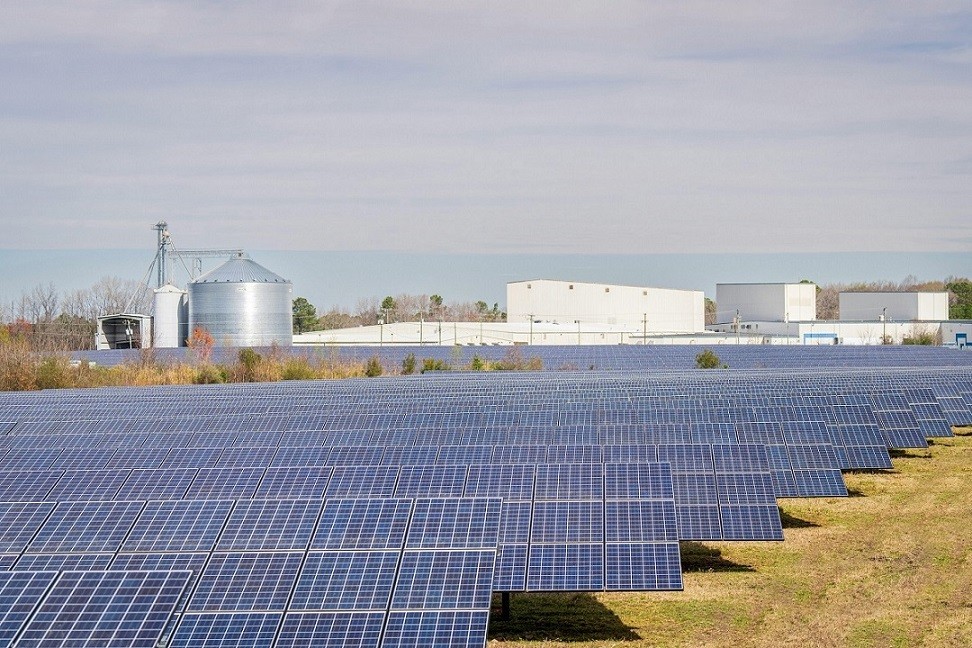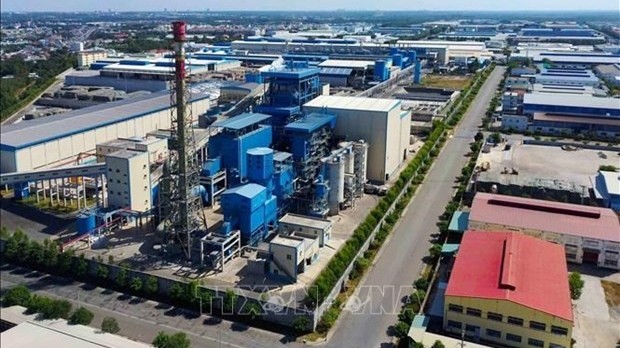
A greener tomorrow with sustainable industrial parks: Scholar
Latest
 |
| Future SIPs/EIPs in Vietnam can aim to include an environmentally friendly infrastructure, incorporating renewable energy sources. (Photo: Pexels) |
The concept of sustainable industrial parks (SIPs) and eco-industrial parks (EIPs) has been gaining traction in Vietnam, aligned with the country's commitment to combat climate pollution when joining the UNEP’s Climate and Clean Air Coalition in 2017. Several initiatives have been taken to establish and promote sustainable practices within industrial parks, and to complete the legal framework for investment in such facilities.
What does a sustainable industrial park look like?
SIPs/EIPs are designed to minimise environmental impact, promote resource efficiency, and exercise sustainable practices among industries operating within their boundaries. These parks focus on integrating environmental, social, and economic considerations into their design, operations, and management.
There are many examples from around the world that we could model after here in Vietnam, such as the Kalundborg Eco-Industrial Park in Denmark. For a small coastal community, it affords the city of Kalundborg €24 million in bottom-line savings annually. But the savings aren’t just financial—this process saves 635,000 tons of CO2, 3.6 million cubic metres of water, 100 GWh of energy, and 87,000 tonnes of solid materials – not bad for a town of only 16,000 people.
Future SIPs/EIPs in Vietnam can aim to include an environmentally friendly infrastructure, incorporating renewable energy sources, efficient water management systems, waste recycling facilities, and green spaces to reduce environmental impact.
These parks should also emphasise resource efficiency by promoting cleaner production methods, reducing energy consumption (thus reducing the carbon emissions), optimising water usage, and minimising waste generation through recycling and circular economy principles.
Another key feature may be to target green certifications, such as LEED (Leadership in Energy and Environmental Design) or EDGE (Excellence in Design for Greater Efficiencies) issued by the Green Building Certification Institute (GBCI), demonstrating compliance with environmental standards and sustainable practices.
Beyond the obvious environmental aspects, SIPs/EIPs may aim to contribute to social development by providing job opportunities, enhancing skills training, and improving on-site living conditions for workers.
They can also collaborate with various government ministries, private sector stakeholders, international organisations, and local communities to jointly implement sustainability initiatives, share best practices, and promote innovation.
Why invest in sustainable industrial parks?
Investing in SIPs/EIPs in Vietnam offers advantages for investors, blending financial gains with sustainable development.
 |
| Dr Scott McDonald, Lecturer, The Business School, RMIT University Vietnam. (Photo: N.M) |
On the financial front, investors in these parks may reap the rewards of diverse incentives, tax benefits, and government support. These can include reduced land lease rates, tax exemptions, favourable loan terms, and grants aimed at supporting eco-friendly technologies.
Investors also stand to gain access to potential green financing options and sustainable investment funds, developing multiple avenues for growth.
Sustainable eco-industrial parks place a premium on resource efficiency and waste reduction. This can help ensure substantial, long-term cost savings as in the Kalundborg example provided earlier.
Moreover, conforming to international environmental standards also enhances an investor's global reputation and facilitates engagement in markets with stringent environmental regulations.
Committing to eco-friendly practices not only underlines an investor's dedication to corporate social responsibility and sustainability but also enhances their brand image. This can potentially broaden their market reach and bolster sales figures.
Ultimately, involvement in SIPs/EIPs builds community engagement and strengthens stakeholder relations, creating potential synergies and mutual support among the diverse entities involved.
The Vietnamese Government has shown support for sustainable industrial development by introducing decrees and/or policies, but many still await more clearly presented special incentives for investors that encourage industries and businesses within SIPs/EIPs to adopt sustainable practices and operate within environmentally friendly frameworks.
Challenges certainly do exist when it comes to integrating these practices in industries, such as balancing economic growth with environmental sustainability, and overcoming initial investment barriers. These are not easily overcome, but with the effort in place from the government to lead this initiative it is possible to begin seeing more SIPs/EIPs taking shape in the months and years to come.
Investing in sustainable industrial parks is not just an investment in the future; it is an investment in the collective wellbeing of our communities, our environment, and our shared tomorrow.




















